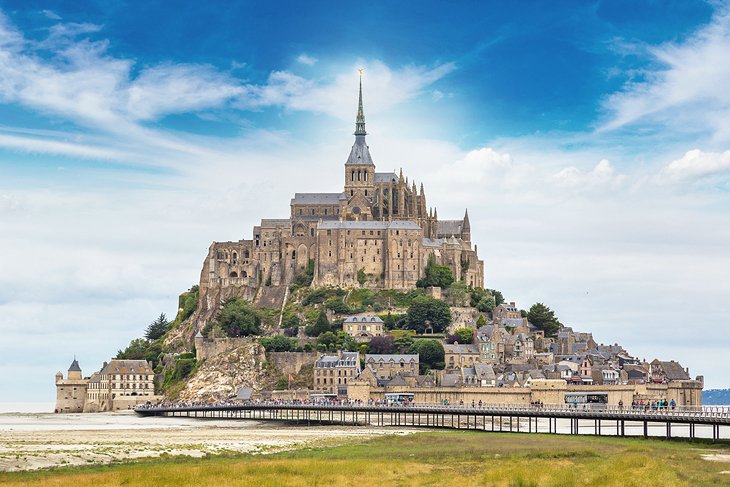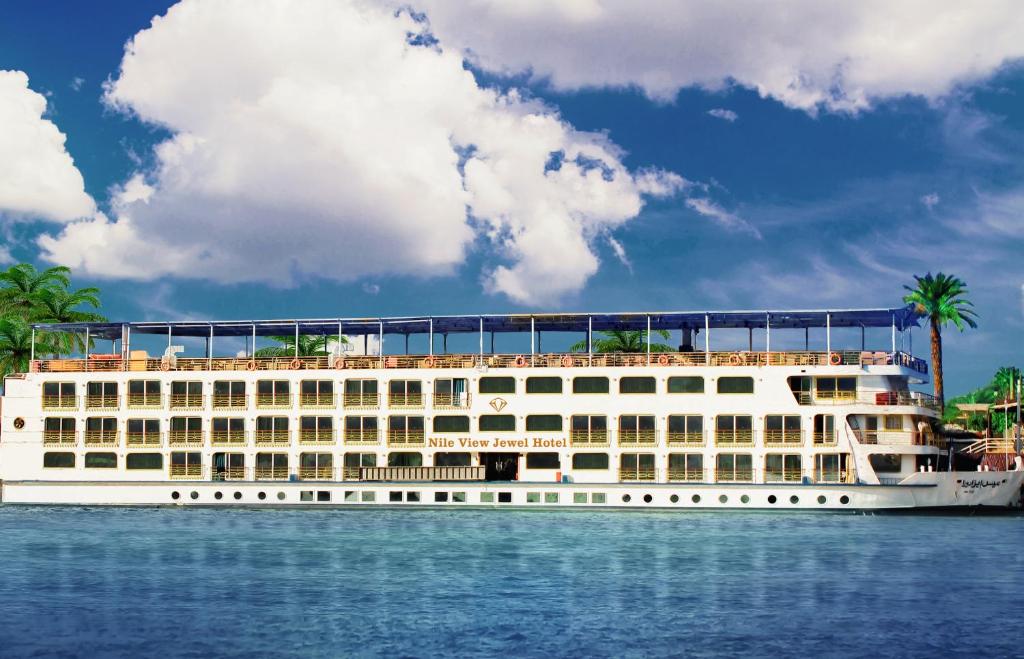The French affectionately call their beloved homeland “l’Hexagone” because of its distinct six-sided shape. Each corner of France has its own unique character: the rugged and outdoorsy French Alps; sun-drenched and slow-paced Provence; the glamorous and gorgeous Côte d’Azur coastline; and idyllic Alsace, a pastoral region where storybook hamlets are tucked away in the vine-covered rolling hills.
Paris and Versailles are must-see destinations for a first trip to France. Other classic travel itineraries include stops at fashionable seaside resorts, fairy-tale castles, and glorious Gothic cathedrals.
More off-the-beaten-path experiences are found in the countryside, such as at farmhouses in Burgundy, fishing villages in Brittany, and quaint towns in the forests of the Pyrenees Mountains.
From cultured cities to pristine nature sites, France offers endless tourist attractions. Discover this fascinating and diverse country with our list of the best places to visit in France.
1. Paris & Versailles
Appreciated for its elegance and joie de vivre, Paris is a grand European capital filled with architectural masterpieces like the Eiffel Tower and the Notre-Dame Cathedral.
Reflecting the city’s rich heritage, the Louvre (one of the top museums in Paris) contains an exceptional fine arts collection, while the Musée d’Orsay and the Musée de l’Orangerie display treasures of French Impressionist art.
Other charms of Paris are its atmospheric medieval quarters and graceful boulevards. Quintessential tourist experiences include shopping at bookshops in the Latin Quarter, strolling the Champs-Elysées, and people-watching from a sidewalk café terrace on the Boulevard Saint-Germain-de-Prés.
A short train ride from Paris is the UNESCO-listed Château de Versailles. Built for Louis XIV (the “Sun King”), this opulent 17th-century palace is a testament to the glory and absolute power of the French monarch. The château’s splendid Baroque facade, dazzling Hall of Mirrors, and fountain-adorned formal gardens allow visitors to imagine a scene of France’s bygone royal court.
2. The Charming Countryside of Provence
In contrast to the grey skies of Paris and northern France, the charming region of Provence basks in bright Mediterranean sunshine most of the year. This rural area feels untouched by the modern world and has a rugged, earthy appeal.
The rolling hills are covered with a patchwork of small farms, olive groves, sunflowers, and lavender fields. Fragrant rosemary, sage, and thyme and other wild herbs grow here in abundance and enliven the local cuisine. In this dreamy landscape, Impressionist painters found inspiration to create vibrant works of art.
Visitors are enchanted by the villages perchés, which crown Provence’s hilltops. Two favorite destinations are Saint-Paul-de-Vence, a picture-perfect walled medieval town (near many Côte d’Azur tourist spots, such as Eze) and Gordes, which is among the top attractions in the Luberon.
In the heart of Provence, traditional ambience is found on the tree-shaded streets and outdoor cafés of Aix-en-Provence, at the festivals of Arles; and by the old seaport of Marseilles.
Also not-to-be missed are the Palais de Papes in Avignon; the legendary beach resort of Saint-Tropez; and the Roman theater in Orange, one of the amazing sites of the Haut-Vaucluse.
3. The Côte d’Azur
Also known as the French Riviera, the Côte d’Azur is a glamorous stretch of Mediterranean coastline named for its deep azure-blue waters. The skies are often a mesmerizing cerulean hue as well, thanks to the sunny weather most of the year in this area of southern France.
Stretching roughly from Saint-Tropez (overlapping with the Provence region) to Menton, less than 30 kilometers from the border with Italy, the Côte d’Azur has been a fashionable seaside resort destination since the early 19th century.
Spring and autumn bring milder weather and a quieter, more relaxing atmosphere.
The Côte d’Azur has something for everyone. Nice is the place to enjoy the good life, visit art museums, and stroll along cobblestone streets and palm-fringed boulevards. Within a short drive from Nice are places to visit as day trips, such as splendid waterfront villas and top-notch art museums.
Among the most famous French Riviera tourist attractions are Cannes, which has a dazzling beachfront promenade and an alluring Old Town; and Monaco, a tiny royal principality that is synonymous with luxury and decadence. Both Cannes and Monaco feature five-star hotels, acclaimed restaurants, and yacht-filled marinas.
Sun worshippers flock to Saint-Tropez, a happening summer vacation spot with exclusive private beaches, as well as public beaches that appeal to regular tourists. Vacationers appreciate Antibes for its expansive sandy beaches, atmospheric medieval quarter, and fabulous Picasso Museum housed in a castle overlooking the sea.
4. Mont Saint-Michel in Normandy
Mont Saint-Michel is a highlight of the Normandy region, a pastoral landscape of apple orchards, woodlands, and cow pastures. This unmissable tourist attraction ranks number one on the long list of Normandy travel destinations, which includes stellar sights such as historic castles and picture-perfect towns.
Built between the 11th and 13th centuries, the Abbey of Mont Saint-Michel is one of the most awe-inspiring sights in France. The UNESCO-listed abbey is perched on the hilltop of an islet in the Bay of Mont Saint-Michel and is considered a marvel of Gothic architecture.
The abbey church was an important medieval pilgrimage site on the “Way of Saint James” route to Santiago de Compostela in Spain. Modern-day pilgrims still make the journey here, crossing the Bay of Saint-Michel by foot at low tide.
Visiting Mont Saint-Michel is a spirit-lifting experience. Tourists may attend religious services, concerts and cultural events at this sublime historic abbey.
5. The Châteaux of the Loire Valley
Like the scene of a fairy tale, magnificent castles are scattered throughout the densely forested landscape of the Loire Valley. Stretching for 280 kilometers, from Sully-sur-Loire to Chalonnes-sur-Loire in Anjou, the Loire Valley is the largest UNESCO-listed site in France.
The region boasts an incredibly rich cultural heritage. During the 15th and 16th centuries, France’s kings built sumptuous country retreats here purely for entertainment and enjoyment.
Extravagant châteaux, such as the grandiose Château de Chambord and the emblematic Château de Chenonceau, offer insight into the opulence of the Renaissance-era French court.
French nobles and elites also built stately manor houses, such as the majestic Château of Cheverny and the Château d’Azay-le-Rideau in an idyllic setting with a water-filled moat.
For families with kids, the Mini-Châteaux Park in Amboise is a marvelous destination. Set in two hectares of woodlands, the amusement park features more than 40 replicas of Loire châteaux built on a 1/25 scale. Children love exploring the kid-sized castles designed with authentic details.
6. Reims & its Magnificent Gothic Cathedral
Reims is justifiably placed among France’s list of “Villes d’Art et d’Histoire” (“Cities of Art and History”). Of the town’s three UNESCO World Heritage Sites, the most renowned is the Cathédrale Notre-Dame de Reims, where French kings were crowned. The most celebrated event was when Joan of Arc escorted Charles VII to the cathedral in July of 1429 for his coronation as king.
Built in the 13th century, the Notre-Dame Cathedral of Reims is a gem of High Gothic architecture. The dazzling exterior features a profusion of flying buttresses and sculpted angels, while the spacious interior has a solemn ambience of spirituality.
Among the city’s top attractions, other UNESCO-listed landmarks include the Palais du Tau, a 17th-century Archbishops’ Palace, and the 11th-century Basilique Saint-Rémi.
7. Fishing Villages, Historic Ports & Beaches in Brittany
A picturesque coastal region, Brittany has a rich maritime heritage seen in its historic port towns: Saint-Malo, surrounded by old ramparts; the medieval capital of Nantes; and the fortified 14th-century Concarneau.
The seaside also boasts stylish beach resorts like fashionable Dinard on the Côte d’Emeraude, the summertime vacation destination of La Baule on the estuary of the Loire River, and Tréboul near the lovely riverside town of Quimper.
The scenery is dramatic and unspoiled, with secluded sandy beaches and a rocky coastline, where wild Atlantic waves crash against the shore. Centuries-old fishing villages are sheltered in quiet bays and on tiny windswept offshore islands.
Breton culture can be traced back to the Celts (the local dialect is related to Gaelic). Similar to Ireland, it is a land of mythology and legends. Today, Brittany is strongly Catholic. Locals celebrate ancient religious customs called “pardons,” special festivals when townspeople wear old-fashioned regional costumes.
The local cuisine features delicious specialties such as fresh seafood and savory buckwheat crepes. Brittany also has a famous regional pastry, the “kouign-amann,” a buttery pastry made with croissant dough that is layered with sprinkles of sugar, has a moist cake-like center, and a crispy caramelized exterior.
8. Biarritz & Saint-Jean-de-Luz
A blend of Parisian-style elegance and the untamed natural beauty of the Atlantic coast, Biarritz is an upscale seaside resort with fabulous beaches. Biarritz was favored by Empress Eugénie, who loved this area of the Basque region. She chose a sandy hillside overlooking the Bay of Biscay as the location for her Imperial residence, the Villa Eugénie.
This Second Empire palace has been converted into luxury accommodations, the five-star Hôtel du Palais, which offers exquisitely decorated guest rooms and an oceanfront gastronomic restaurant. Next to the hotel property is the Grande Plage, a sandy beach that has attracted sunbathers since the Belle Epoque.
Another of the top beaches in Biarritz is the Plage du Miramar. A picturesque scene of colorful, striped cabanas and parasols during summertime, this sheltered beach has the delightful ambience of an old-fashioned seaside resort.
Just a half-hour drive (15 kilometers) from Biarritz is the historic fishing port of Saint-Jean-de-Luz, a popular summertime destination with family-friendly beaches.
Traveling inland 25 kilometers from Biarritz is the traditional Basque village of Espelette. This small village boasts typical half-timbered, red-shuttered Basque houses decorated with rows of dried red peppers called Piment d’Espelette (prized for use in Basque cuisine).
In Spain’s Basque country, 50 kilometers by bus, car, or train from Biarritz, the lively seaside city of San Sebastian delights visitors with its elegant architecture, sandy beaches, and gourmet tapas.
9. Joan of Arc Monuments in Chinon, Rouen & Orléans
France’s national heroine, Joan of Arc led the country to victory during the Hundred Years’ War when she was only seventeen years old. Her divinely ordained mission, instructed by heavenly voices, is still an inspiration to the faithful.
Joan of Arc’s remarkable story began in Chinon, where on March 9, 1429, she went to meet the future Charles VII (the “Dauphin”) at the Forteresse Royale (a medieval fortified castle). On this momentous occasion, the “Maid of Orléans” informed the Dauphin of his right to the crown and asked for help in forming an army, which was needed to break the Siege of Orléans (a pivotal event during the Hundred Years’ War between France and England).
Because of its rich heritage, Chinon is listed as a Ville d’Art et d’Histoire (City of Art and History). At the tree-lined Place Jeanne d’Arc stands a monumental bronze equestrian statue of Joan of Arc depicted as a heroic military leader.
Among the top attractions of the Loire Valley, Orléans is another essential stop on the Joan of Arc trail. The city was saved by the “Maid of Orléans,” during the Siege of 1429. After leading the French to defeat the English army, Joan of Arc came to the town’s Cathédrale Sainte-Croix to pray. The cathedral’s 19th-century stained-glass windows recount the history of Joan of Arc.
In a 15th-century half-timbered house, the Maison de Jeanne d’Arc presents exhibits about Joan of Arc, who is now recognized as a saint by the Catholic Church. A bronze equestrian statue of Joan of Arc graces the Place du Martroi in Orléans.
Tourists can learn more about Joan of Arc’s life story at several of the top sights in Rouen. At the 13th-century Tour Jeanne d’Arc (dungeon), a relic of the town’s old château, Joan of Arc was imprisoned, threatened with torture, put on trail, and accused of heresy.
Since this infamous trial in 1431 and martyrdom, Joan of Arc has been elevated to a saint. Built on the site in Rouen where Joan of Arc was burned at the stake, the Eglise Jeanne d’Arc pays tribute to the saint’s legacy. This modern church features an upwards-swooping roof designed to resemble flames.
Rouen also has a museum devoted to Joan of Arc, the Historial Jeanne d’Arc, in the former Archbishop’s Palace (a classified Historic Monument) on the Rue Saint-Romain. This museum delves into Joan of Arc’s epic story and explains how she changed the course of French history. Evocative multimedia exhibits and videos bring the events to life in a thrilling way.
10. The Alsace Region
The historic cities of Strasbourg and Colmar, along with the hundreds of Alsatian villages, have a special old-world charm that is completely distinct from the rest of France. The architecture and ambience of Alsace has been influenced over the centuries by neighboring Germany, as seen in the brightly painted, half-timbered buildings and venerable Gothic churches.
Quaint and cultured, Strasbourg enchants visitors with its narrow cobblestone streets, scenic canals, and ornate cathedral. Colmar is the quintessential Alsatian town, full of interesting old churches and traditional houses with flower-bedecked balconies.
Outside these two cities is an unspoiled landscape of vine-covered foothills. Nestled in the valleys and along the Rhine River are tiny storybook hamlets and picturesque villages.
The Alsace Villages route is a delightful way to explore the region. Many villages are listed as the Plus Beaux Villages de France (Most Beautiful Villages of France), and some are designated as Villages Fleuris (Flowering Villages) because of the vibrant potted flowers that adorn the homes and streets.
11. Mont-Blanc & Annecy in the French Alps
The French Alps boast some of the most awe-inspiring natural scenery in the world. The majestic Mont Blanc is the highest mountain in Europe, an iconic snowcapped peak that soars to 4,810 meters. At this altitude, the air is fresh and the landscape is sublime, with crystal-clear lakes, dramatic rushing waterfalls, peaceful valleys, and refreshing pine forests.
During summertime, visitors flock to the Alps to go hiking, cycling, and mountain climbing. In the winter, the French Alps draws many tourists for Alpine skiing, snowboarding, and cross-country skiing. The area has many of France’s top-rated ski resorts. Other things to do during the snowy season include ice-skating, dog sledding rides, and old-fashioned horse-drawn sleigh rides.
Besides the spectacular mountain terrain, the region also has a rich cultural heritage linked to the ancestral territory of the Italian royal House of Savoy, as well as the historic Dauphiné region.
The lovely mountain village of Chamonix (about a 15-minute drive from the base of Mont Blanc) offers traditional alpine ambience, while Annecy (just over a one-hour drive from Chamonix) has an ancient château, lakeside scenery, and fairy-tale ambience.
For those seeking a rejuvenating getaway, the region’s Belle Epoque spa towns, such as Aix-les-Bains and Evian-les-Bain, deliver the ultimate relaxing vacation experience at pampering thermal spas and upscale hotels.
12. Prehistoric Caves in the Dordogne & the Pyrenees
The Dordogne region is one of the best places to visit in France for viewing prehistoric cave paintings. Designated as a UNESCO World Heritage Site, the Lascaux Cave in the Dordogne’s Vallée de la Vézère contains masterpieces of Paleolithic art created by Cro-Magnon man.
Although the Lascaux Cave has been closed to the public to prevent damage, visitors may view copies of the cave’s artwork at the nearby Lascaux II site (in Montignac).
Also in Montignac is the Centre International de l’Art Pariétal (International Center of Cave Art), which presents exhibits about prehistoric animal paintings and reveals the work of archaeologists. The center includes Lascaux IV, which is a complete replica of the prehistoric Lascaux Cave.
Also in the Vézère Valley, the Grotte de Rouffignac is adorned with paintings of horses, cows, bison, deer, goats, and mammoths.
One of the top attractions of the Pyrenees region is the Grotte du Mas d’Azil, an immense cave decorated with drawings from the Magdalenian and Azilian periods. This tourist attraction deep in the Pyrenees Mountains offers guided tours and admission to the nearby Musée de la Préhistoire.
About an hour drive from the Mas d’Azil Cave, the Grotte de Niaux also has remarkable Palaeolithic art dating from 14,000 to 10,000 BC. The Grotte de Niaux is open to the public for guided tours (reservations required).
Near the town of Tarascon-sur-Ariège, the Grotte de Lombrives reveals fascinating ancient history, and the Grotte de Bédeilhac dazzles with its rare Magdalenian-era prehistoric art.
13. Rocamadour: A Medieval Pilgrimage Destination
Clinging to a sheer cliff, Rocamadour seems to aspire towards heaven. This amazing site was the third most important Christian pilgrimage destination in the 11th century and a stop on the Camino de Santiago pilgrims’ route.
The village has seven medieval-era sanctuaries, accessible by steep pedestrian staircases. The most famous is the Chapelle Notre-Dame (Chapelle Miraculeuse), which contains the precious 12th-century Black Virgin (Notre-Dame de Rocamadour) associated with miracles.
Rocamadour’s largest church, the Basilique Saint-Sauveur is a UNESCO-listed historic monument. This 13th-century pilgrimage church displays the architectural transition from Romanesque to Gothic.
Outside the village is the Causses du Quercy Regional Nature Park. Within this unspoiled landscape on the Quercy plateaus, grazing goats produce milk that is used to make AOC-labeled Cabécou de Rocamadour cheese. In late May or early June, the Rocamadour village hosts the Fête des Fromages (Cheese Festival) devoted to farmhouse cheeses of the region.
Other top attractions within an hour-and-a-half drive of Rocamadour include: Limoges (145 kilometers away), classified as a Ville d’Art et d’Histoire and one of the top travel destinations in the Limousin region; and Périgueux (115 kilometers away), a quaint town in the Dordogne region dating to the Roman era, which was also on the Camino de Santiago.
14. Bordeaux & Saint-Émilion
The Bordeaux region is a beautiful bucolic corner of France, where grandiose castles preside over rolling, vine-covered hills. Scenic tree-shaded paths traverse the countryside and follow alongside the Garonne River, as well as its placid canals. Many travelers enjoy exploring this area on a leisurely cycling itinerary.
The region has two exceptional UNESCO World Heritage Sites: the elegant city of Bordeaux, with more than 350 buildings classified as historical monuments, and the little country village of Saint-Émilion, 51 kilometers from Bordeaux, which is packed with notable churches and monasteries.
15. The Burgundy Region: Quintessential France
The Burgundy region is an idyllic landscape of lush woodlands and rolling hills dotted with impressive monuments. Romanesque chapels, ancient towns, and inspiring old abbeys attest to a rich cultural heritage.
Among the top attractions of the Burgundy region are the historic city of Dijon, with its aristocratic palaces, ornate Gothic churches, and excellent museums; the charming medieval town of Beaune; and the monumental Abbey of Cluny, which was the largest church in Christendom until the 16th century when Saint Peter’s Basilica was built in Rome.
Besides its incredible history, Burgundy is renowned for gastronomy. The traditional cuisine includes a repertoire of famous specialities such as escargot, Boeuf Bourguignon (Beef Burgundy), and Coq au Vin.
16. Cirque de Gavarnie in the Pyrenees Mountains
The mountainous Pyrenees region is a soul-inspiring place that offers both natural splendor and spiritual wonders. The region has many sacred pilgrimage sites, as well as rejuvenating spa towns.
The UNESCO-listed Cirque de Gavarnie is nature’s version of a cathedral. Forming a semicircle, the awesome 1,700-meter-high limestone rock walls are draped with dramatic waterfalls that tumble down into rushing rivers and peaceful streams.
The entire Hautes-Pyrénées region is part of a national park, the Parc National des Pyrénées, which borders Spain. Within the park are hiking trails through lush forests and verdant valleys.
During wintertime, the French Pyrenees is a popular destination for downhill skiing. Top resorts include Cauterets, Font-Romeu, and the Grand Tourmalet ski area.
17. Lourdes: France’s Biggest Catholic Pilgrimage Site
Nestled in the foothills of the Pyrenees Mountains, Lourdes is France’s most important Catholic pilgrimage site. Millions of visitors come to Lourdes every year for spiritual inspiration. Some arrive to bathe in the waters in hopes of miracle cures. To the faithful, Lourdes is known for the 70 validated miracles that have occurred here.
The main pilgrimage sites, the Grotto (where Saint Bernadette received her divine visions), and the Basilique Notre-Dame du Rosaire are surrounded by a serene woodland alongside a tranquil babbling brook. Marian Processions take place every evening at 9pm from April through October. The procession of hundreds of pilgrims holding candles is a breathtaking sight to behold.
18. Gourmet Restaurants & Cultural Attractions in Lyon
An enticing destination for gourmands to visit, Lyon is at the heart of French gastronomy. Lyonnais cuisine is renowned for its delicious regional specialties such as quenelles (fish dumplings served in a creamy sauce), steak, Bresse chicken with morels, sausages, and salads.
Tourists can choose from an incredible selection of restaurants. For casual everyday dining, the “Bouchons Lyonnais” (traditional bistros) allow visitors to sample the authentic local cuisine while enjoying an inviting, cozy ambience.
A top destination for fine dining, the Auberge du Pont de Collonges was helmed by famous chef Paul Bocuse for decades. Today this legendary gastronomic establishment with two Michelin stars has changed its name to Restaurant Paul Bocuse. The restaurant carries on the legacy of Paul Bocuse by continuing to serve his signature dishes.
Besides its gourmet delights, Lyon is rich in cultural heritage. The city is designated as a UNESCO World Heritage Site. Among the many historic attractions are ancient Roman ruins, atmospheric medieval quarters, and elegant Renaissance houses.
Lyon’s Musée des Beaux-Arts is second only to Paris’ Louvre Museum in its wealth of artistic treasures. The museum contains an outstanding assortment of European paintings from the 14th to 20th centuries, including masterpieces by Véronèse, Rubens, Delacroix, Renoir, Monet, and Picasso.
19. Gascony Region & Toulouse in the South of France
The rural area of Gascony and the city of Toulouse exude the sultry charm of southern France. Sunny and slow-paced, Gascony (Le Gers) has a traditional rural character that seems untouched by modernity. The rolling hills are blanketed with a patchwork of small farms and dotted with quiet country villages and ancient castles.
Steeped in history dating back to the 13th century, Toulouse is known as “The Pink City” because of its distinctive red-brick architecture. These buildings reflect the sunlight in a rosy-toned hue. While ambling the pleasant town squares and basking on outdoor café terraces in Toulouse, visitors soak up the laid-back vibe of this beautiful and balmy city.
The UNESCO-listed Canal du Midi runs through Toulouse and flows all the way to the Mediterranean port of Sète near Marseille. The tree-shaded path along the canal is popular for leisurely strolls and cycling.
20. The Camargue
The Parc Régional de Camargue, just 16 kilometers from Arles in Provence, is a place where visitors can take a breath of fresh air and enjoy unspoiled natural scenery. Marshlands, meadows, salt flats, and pastures blanket the landscape.
In this pristine UNESCO-listed Biosphere Reserve (around 100,000 hectares of protected wetlands), wild white horses roam free, and pink flamingoes thrive.
The nature reserve is home to over 300 bird species, which makes it a paradise for bird-watching. Other famous fauna include the native Camargue Bulls, which are raised for use in bullfighting.
21. Island of Corsica
The island of Corsica has a rugged and raw beauty, seen in its dramatic coastal landscapes, pristine forests, and snowcapped mountains. The island is fringed with beautiful beaches, quiet bays, attractive fishing ports, and lively seaside cities, while the inland hillsides are crowned with ancient villages where time seems to stand still.
Sun-worshipping beach lovers and outdoorsy and sporty types (including hard-core hikers) are drawn to the island’s incomparable nature sites. The 1,000-kilometer shoreline offers crystal-clear waters that make it a paradise for snorkeling and scuba diving.
Read & Write : write for us
 Lifeyet News Lifeyet News
Lifeyet News Lifeyet News





